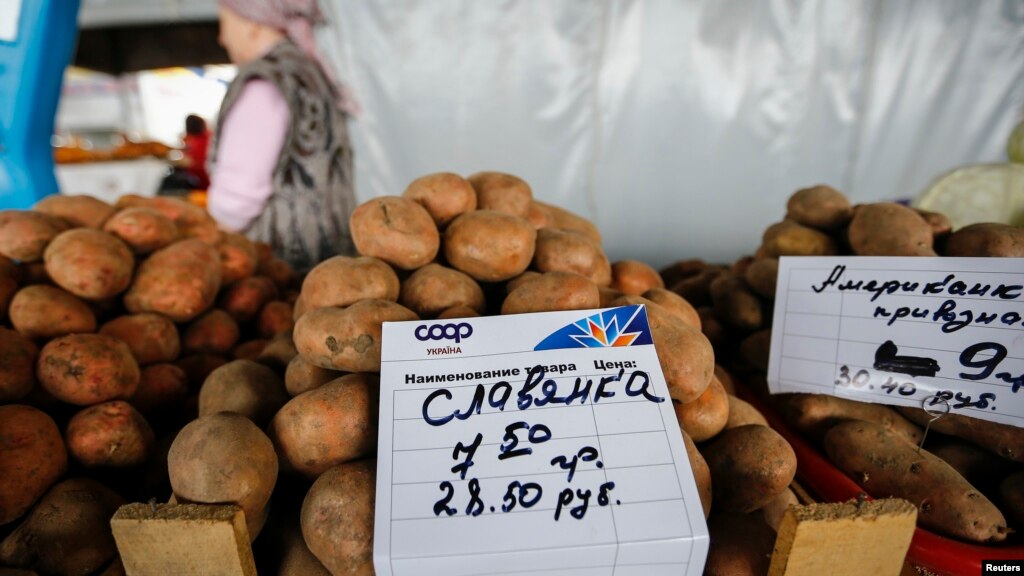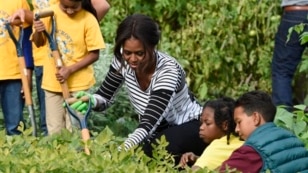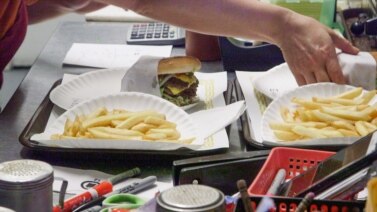
Food affects more than people’s bodies. It contributes to social status, empires and the outcome of wars.
So what foods have helped shape civilization? Christopher Cumo, author of “Foods That Changed History,” says these six crops have played a major role.
Potato
One food at the top of the list is the potato.
Ahh…. When you think about foods made with the potato — french fries, potato chips, mashed potatoes and potato salad — what is there not to like about potatoes?
The potato is the world’s largest food crop. People in the English-speaking world call it the “white potato” or “Irish potato” to distinguish it from the sweet potato.
Author Christopher Cumo says South Americans introduced the potato to the Spanish in the 16th century. The Spanish loved it and quickly brought it back to Europe.
But many Europeans realized the potato plant was related to a lot of other plants that had poisonous leaves and stems. They believed the potato was also poisonous. So for a time, Europeans would not eat it.
However, Cumo says, Europeans’ attitudes changed when they learned how many calories one small potato offered.
“Farmers began growing potatoes and they were so important because they provided a dense packet of nutrients and calories. So that if you only had a limited amount of land and you had to plant something that yielded abundant calories, you planted potatoes.”
Farmers also liked the potato because it protected them against hungry soldiers. Cumo explains that armies traditionally fed themselves by stealing grain from farmers’ fields.
"Well, farmers begin to understand that if they plant potatoes no army would camp long enough to dig up all the potatoes because you are too vulnerable to counterattack at that point. So the potatoes saved farmers from the traditional horrors of starvation during warfare.”
Ireland even came to depend on the potato. However, in the 19th century a disease there killed millions of acres of potatoes. The loss caused a mass famine. A million Irish people died, and millions more migrated to the United States and Canada.
Sugar
Next on the list is that white, crystal-like substance used in many sweet desserts and sodas: sugar.
Beyond the way it expands our waists and rots our teeth, Cumo says sugar played a tragic role in the new world.
“I’m thinking particularly about the tropics: the Caribbean islands and all of tropical America, even Brazil and in countries of that sort. They all rapidly adopted sugar cane to feed the demand for sugar -- sugar cane being the plant from which we derive sugar."
These countries developed large, profitable sugar cane estates. But the workers kept dying of new European diseases.
So landowners looked for a new source of labor. They found it in Africa. In other words, sugar fueled the African slave trade.
“So our sugar came at a terrible price, I would argue, at the price of many lives and aspirations destroyed over many generations.”
Corn
This next food is the most produced crop in the world. But three-quarters of it go to farm animals.
Cumo says maize — also known as corn — is not primarily a food for humans; however, it has long been a cultivated crop for people in the Americas.
“Worldwide, in large places in Latin America and Mexico, people are much more willing to eat corn as a food. So it’s an important part of Mexican cuisine. You can go to any Taco Bell in the world and order your corn tortilla.”
Cumo says native people in North and South America always ate corn. To them, he says, it was too important to feed to the llamas!
Today, corn that people and animals do not eat is converted – changed into a variety of products. For example, corn can be converted to ethanol that is used in alcoholic drinks as well as in gasoline.
Corn can also be converted into corn syrup to sweeten sodas, chewing gum, yogurt and salad dressings. If you ever had gravy or sauce on your food, cornstarch or corn flour is used as a thickener.
And how about those non-food products such as batteries, make-up, explosives, insecticides, detergents, leather, rubber tires and tobacco? Elements of corn are in those, too.
Bottom line: Corn is in many things. It is a part of life from birth to death. Corn is found in some baby formulas for infants, as well as in embalming fluid to preserve the bodies of the dead.
Need I say more?
Rice
Rice may be even more important than corn as a food crop. Corn is used for many items, but rice feeds half the world’s population.
Cumo says most humans get the majority of their calories from rice. It is a major part of the diet in China, Southeast Asia and much of India. Rice is also an important food in parts of Africa.
In fact, Cumo says rice is so important that it has a holy meaning. In some cultures, rice is a symbol of women and fertility. Other cultures have special ways they farm and store rice. The rituals honor the rice, as well as protect its power to give and sustain life.
“So rice has not only sustained people but it’s sustained the religious belief of all of these millions and now billions of people worldwide."
Fish
Fish is also essential. Many species of animals eat fish, including humans.
Modern humans used sharpened sticks to spear fish in Europe’s rivers and lakes; however, early humans — Neanderthals — did not learn how to fish. Therefore, fish might have played some role in their extinction 28,000 years ago.
Cumo says the fish has also become a worldwide symbol of Jesus.
“You can read a number of stories in the (Christian) Gospels in which Jesus eats a piece of fish after his resurrection, or tells his friends to cast their net in another part of the lake where they’re able to capture many more fish. So fish has been enormously important in history."
As a result, he says, the image of a fish is often used to mean Christianity.
Beans
Beans are grown and eaten all over the world. They are members of the legume family. This protein-rich, low-cost crop is related to a number of important food plants, including lentils, peas, beans, peanuts and soybeans.
Cumo explains that as farming developed, so did hierarchies. Those with money and power could afford meat. But most people were not wealthy enough to buy animals to eat. So where did they get their protein? Largely from beans.
“It’s interesting to note that if you combine say beans and corn — which you have beans being an American crop and corn being another American crop, both developed in southern Mexico — you get a complete package of amino acids so the body doesn’t need anything more to meet its daily protein requirements.
"And you find this true for people throughout the world. If they combine soybeans, a close relative of beans, with whole grain rice, you get the perfect complement of proteins.”
He says people after people after people have combined beans and grains to get almost all the nutrients they need for their day-to-day existence.
In other words, beans — along with potatoes, sugar, corn, rice, and fish — have played a very powerful role in human survival, as well as in human history.
I’m Christopher Jones Cruise.
And I'm Marsha James.
Marsha James wrote this story for Learning English. Kelly Jean Kelly was the editor.
What do you eat in your part of the world: potatoes or rice? Or both? Write to us in the Comments section or on our Facebook page.
Words in This Story
distinguish – v. to notice or recognize a difference between people or things
poisonous – adj. very harmful or unpleasant
rot – v. to slowly decay or cause something to decay
rapidly – adj. happening quickly
derive – v. to take or get something from something else
aspiration – n. something that a person wants very much to achieve
cultivated – adj. raised or grown on a farm or under contolled conditions
convert – v. to change
bottom line – n. the most important thing to consider
sustain – v. to provide what is needed for someone to exist
extinction – n. a coming to an end or dying out
protein – n. a substance found in foods that is an important part of the human diet
status – n. the position of someone or something when compared to others
empire – n. a group of areas that are under the control of one ruler or government
calories – n. a measurement of heat used to show the amount of energy that foods produce in the body
estates – n. large pieces or land
llamas – n. a South American animal, often used for meat and for carrying supplies
resurrection – n. the Christian belief that Jesus Christ returned to life after his execution


